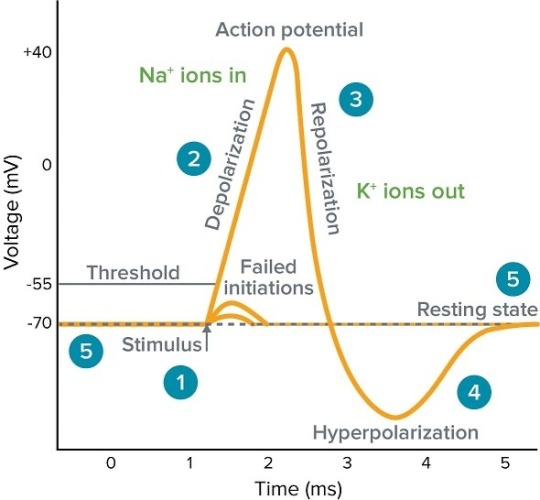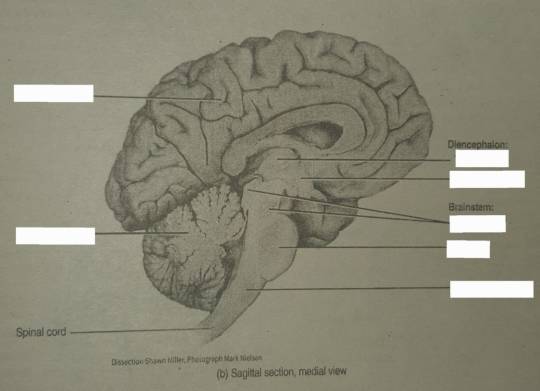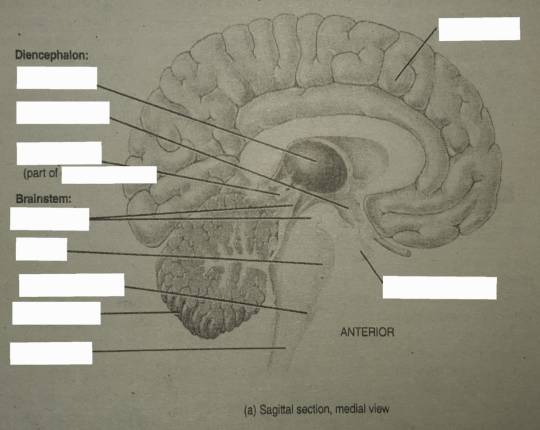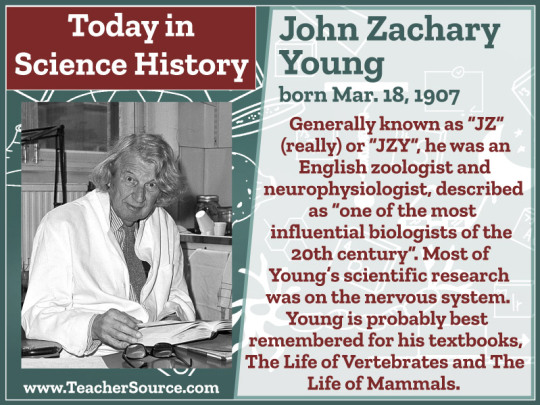#Neurophysiology
Explore tagged Tumblr posts
Text

6:30 am
empty lecture halls ✧。*゚
🎧 ~ orgel by mia
#university#exam preparation#exam season#lecture hall#chaotic academia#dark academia#biology major#biology student#undergrad student#neurophysiology#study motivation#studyblr#study blog#studyspo#study aesthetic#exam prep#kr&b#kchill#kpop#r&b#r&b/soul
19 notes
·
View notes
Text
instagram
Episode 196: The Disappearance of Jacobo Grinberg *IS LIVE*! Image 01: Jacobo Grinberg was a famed Mexican scientist, neurophysiologist, and psychologist who dedicated his life to studying an unseen reality or “Lattice” which existed at the intersection of psychic ability and shamanism. Image 02: Jacobo in the lab. Image 03: One of Jacobo’s experiments tested psychic ability by instructing children to meditate, after which he would blindfold the child and ask them to describe picture books without use of their eyes. Image 03: The experiments led Jacobo to publish his “sintergic theory” about the existence of an unseen reality, or “lattice”, we can tap into with meditation. Image 04: Jacobo theorized that Mexican Shamans were able to tap into the lattice and began observing a Mexican healer known as “La Pachita.” Image 05-08: La Pachita was famous for performing psychic surgeries using only a few bandages and a rusty kitchen knife. During these surgeries, Pachita would connect with a spirit she called “Hermanito” who had been a powerful Aztec ruler known as Cuauhtémoc. Image 09: As Jacobo’s controversial research began revealing things he was “unable to explain with modern science”, Jacobo found himself at the center of political upheaval and was ostracized from the scientific community... until he went missing altogether. Some people believe Jacobo actually transformed into someone else entirely named Shiva Shambo. Image 10: Shiva Shambo. What do you guys think? Where did Jacobo go? Is Shiva Shambo and Jacobo the same person?!
#the disappearance of jacobo grinberg#jacobo grinberg#mexico#pachita#shiva shambo#mexican history#shamanism#psychic ability#neuroscience#psychology#neurophysiology#mysterious disappearances#instagram#photo dump#Instagram#let's get haunted
7 notes
·
View notes
Text
Neurophysiological Symphony: Decoding the Intricacies of Neuronal Action Potentials 🧠⚡️
Salutations, Tumblr scholars! 🎓 Prepare for a cerebral voyage as we delve into the profound intricacies of neuronal communication, spotlighting the ethereal ballet of action potentials! 🌌💫
Introduction:
Neurons, the virtuosos of our nervous system, engage in a sophisticated dialogue facilitated by the nuanced choreography of action potentials. Let us dissect this neurophysiological marvel with precision and finesse. 📚✨
1. The Prelude - Axon Hillock Overture:
Initiation unfolds at the axon hillock, a nexus of decision-making. Voltage-gated sodium channels undergo conformational changes, inducing an influx of sodium ions, thus instigating the critical decision to fire—an orchestration known as the initiation phase. ⚙️⚠️
2. Act I - Depolarization Crescendo:
The ensuing depolarization phase witnesses a surge in membrane voltage, orchestrated by the influx of positively charged sodium ions. This dynamic spectacle disrupts the membrane's resting potential, marking the commencement of the neuronal conversation with unparalleled fervor. 📈🎻
3. Act II - Repolarization Sonata:
Voltage-gated potassium channels, in a harmonious interlude, activate, allowing potassium efflux. Repolarization unfolds gracefully, reinstating the neuron's electrical equilibrium. The meticulous choreography readies the neuron for subsequent engagements. 🚪💨🔄
4. Act III - Hyperpolarization Cadence:
A brief hyperpolarization, an encore of sorts, ensues as potassium efflux persists, momentarily exaggerating the negative membrane potential. This nuanced cadence serves as a poetic pause before the neural narrative resumes. ⬇️🎭
5. Epilogue - Sodium-Potassium Pump Ballet:
In the epilogue, the sodium-potassium pumps elegantly perform their backstage ballet. Sodium is actively extruded, while potassium is ushered back onto the stage, meticulously restoring the resting membrane potential. A harmonious reset concludes this neurophysiological masterpiece. 🔄🔧
Embark on this odyssey through the synaptical intricacies! 🚀🔬

References:
1. Kandel, E. R., Schwartz, J. H., & Jessell, T. M. (2013). Principles of Neural Science.
2. Purves, D., Augustine, G. J., Fitzpatrick, D., et al. (2018). Neuroscience.
3. Bear, M. F., Connors, B. W., & Paradiso, M. A. (2016). Neuroscience: Exploring the Brain.
#science#biology#college#education#school#student#medicine#doctors#health#healthcare#neurobiology#neurology#neurophysiology
46 notes
·
View notes
Text
Hi there. Again. That’s my neurographica. If some of you can decipher it, I would be very pleased 😃

#psychology#original art#my art#digital art#artwork#psychologist#neurophysiology#neurographica#graphic art
3 notes
·
View notes
Text


Some diagrams I studied for our neuroanatomy module last semester, from Tortora.
The pictures I used for Anki are below.


#dark academia#neuroanatomy#neurophysiology#stemblr#studyblr#biology#studying#studyspo#productivity#academia#study#academic#this was actually one of my worst modules#our prof was *the* lecturer but for phds#not for undergrads :(#i have guyton trauma now#brain#neuro
3 notes
·
View notes
Text

13 notes
·
View notes
Text
Our student, Leti Hosang, was delighted to be invited to present her project at the recent BASES Physical Activity for Health Division Day (online). Earlier in the year, her project won the BASES Undergraduate Dissertation of the Year Award.
Leti’s dissertation titled ‘Effects of Exercise on Electroencephalograpy-Recorded Neural Oscillations: A Systematic Review’ is published in International Review of Sport and Exercise Psychology on a gold open-access basis (see https://tandfonline.com/doi/full/10.1080/1750984X.2022.2103841).
Here is Leti in action, answering a question from a fellow delegate at the event!
#bases#student#conference#presentation#studentlife#graduate#dissertation#award#prize#electroencephalography#eeg#neurophysiology#psychophysiology#neuroscience#brain#science#exercise#exercisescience#research#review#systematicreview#article#publication#openaccess
2 notes
·
View notes
Photo

John Zachary Young was born on March 18, 1907. Generally known as "JZ" (really) or "JZY", he was an English zoologist and neurophysiologist, described as "one of the most influential biologists of the 20th century". Most of Young's scientific research was on the nervous system. Young is probably best remembered for his textbooks, The Life of Vertebrates and The Life of Mammals.
#john zachary young#JZ#JZY#zoology#neurophysiology#biology#the life of vertebrates#the life of mammals#science#science history#science birthdays#on this day#on this day in science history
2 notes
·
View notes
Text
The mind works in various ways,
various different types of neurons,
different types of receptors,
different concentrations of ions and cations.
However, there is one neat property that is present within neuroscience that I finds makes this all easier to understand
"neurons that fire together, wire together", the Hebbian theory
a neat little mnemonic to help you remember the concept of spike dependant neuronal plasticity and potentiation
this principal can be related to hypnosis in a way
classical conditioning in which (in short) a neutral stimulus becomes a conditioned stimulus after repeated correlation of unconditioned stimuli
I find it interesting that this model can be extended in different ways as well
hypnosis has been tied to imagination, which have been tied to theta waves, which both can be tied to place cells, possibly place cell remapping or navigation
I would hypothesise that there is a latent space shift within place cells that lead to certain hypnotic activity, yet I cannot test this currently
There is more of course, there are many models that attempt to create more accurate models (see Harry Klopf, A. A neuronal model of classical conditioning.), but this principle of conditioning is something I intend to synthesise further in my work :3
1 note
·
View note
Text
My plotwist this year is finding out about family drama and realizing that I actually like neuropsychology
0 notes
Text
Dr Angelo Jayamanne is an accredited Neurologist with expertise in neuromuscular disorders, neurophysiology, nerve conduction studies, EMG & EEG.

0 notes
Text

every semester, especially during exam season, i automatically fall into the habit of studying for the grades. i have experienced a million times how much that hurts me and my passion for my subjects, and eventually the grades as well. yet, i still find it so hard to stop thinking this way. and then the night before the exam, when the anxiety has reached its peak and can hurt me no more than how much it already has, i radically accept my condition and surrender.
eventually, i start enjoying what i am studying again and stop worrying about the result. i just wish it happened a bit sooner every time, and not always one night before the exam. wish i get there ~
#when will it end#university#studyblr#undergrad student#undergraduate#biology#neuroscience#actually anxiety#actually adhd#executive dysfunction#study motivation#study blog#biology student#neurophysiology#biology major#chaotic academia
6 notes
·
View notes
Text
Behind the Lens: Peter Istvan's Inspiring Story
Today’s guest is Peter Istvan, Ph.D., MBA, the Owner and Headshot Photographer at Peter Istvan Photography. Peter has a diverse background spanning public and private healthcare and entrepreneurial ventures, and he holds a Ph.D. in Neurophysiology. He has worked in both Canada and the USA and currently serves as the Executive Director of Parry Sound Family Health Team in Parry Sound,…
#kickalzheimersassmovement#Betsy Wurzel#Biking#Charities#Fatbiking#Jack Ride#Mental Health#Neurophysiology#Peter Istvan#Photography#Virtual Reality
1 note
·
View note
Text
How might religious experience be understood?
The view that religious experiences are a union with great power
Many people believe that religious experiences happen because God chooses to reveal himself to particular individuals for reasons of his own. Many people have reported these encounters, and are a common art of human experience so deserve to be taken at face value.
Richard Swinburne supports the view that religious experience can be taken as evidence for the existence of God, making a case that we should treat reports of religious experience in the same way that we treat reports of other, non-religious experiences, unless we have good reason to be suspicious of these reports. If someone thinks they can hear someone at the door, they probably can; and, Swinburne argues, if someone thinks they can hear the voice of God, then they probably can.
His principle of credulity says that experience is normally reliable, and the balance of probability says that experience can be trusted, despite the fact that some experiences can be misleading. He is not saying that experience is infallible, but that what our senses tell us is more likely to be true than not, and therefore we should accept them unless we have convincing reasons not to. We need to accept our own instincts: if we see someone on the street and think they are a friend, there could be the possibility that they are a stranger, but we should not feel the need to be suspicious that perhaps our senses are deceiving us. In the same way, Swinburne argues that if we think we are experiencing God, we should be prepared to believe that it really is God, rather than immediately doubting our own perceptions. Our sense perceptions are normally, though not always, reliable.
His principle of testimony works similarly – we find that people usually tell us the truth, and so we should go with the balance of probability and believe what we are told. According to Swinburne, we shouldn’t make different rules for religious experience, and so if someone tells us they’ve had a personal encounter with God, we should be prepared to take it seriously rather than immediately assuming they are lying.
A psychological interpretation of religious experience
Ludwig Feuerbach argued that when people think they are worshipping God or experiencing His presence, they are in fact worshipping their own human nature. People created God in their own image, to meet their own needs, taking the most admirable aspects of human nature (creativity, hope for the future, heroism, compassion etc) and subconsciously ‘project’ these aspects outside themselves and hold them up as something to worship. People want to feel cared for, and so they invent a God who loves and values them, and they want the world to be a fair place, so they invent a God who rewards the good and punishes the wicked.
Sigmund Freud recognised the human ‘psyche’, composed of the ego, id and super-ego, works on more than one level, as people have unconscious as well as conscious mental processes. He thought that people who think there is a God and believe that they encounter one are fooling themselves, unable to cope with the idea of adult life and so invent an imaginary parent-figure to look after them. They may believe that this parent-figure talks to them directly in personal encounters, but this is ‘infantile neurosis’, something they need to grow out of to live with better mental health.
Donald Winnicott was interested in the importance of the bond between a child and a mother in early life, and the transitions needed to be made for that child to become a mentally healthy adult. He argues that children often have a ‘transitional object’ that belongs in a stage between imaginary and reality, to which they have a very strong emotional attachment and helps them make the step between relying completely on their mother and the self-reliance that comes with growing up. He argues that people still need this illusion when they are adults, but those who cannot make the distinction between these delusions and reality have the ‘hallmarks of madness’. However, illusion is a necessary part of life, allowing us to make sense of ourselves and enjoy creativity. He argued that religious experience is therefore an illusion, but unlike Freud, doesn’t believe that we would be mentally healthier without this illusion, unless we try to impose these illusions on others.
A physiological interpretation of religious experience
Neurophysiology is an area of science which studies the brain and the nervous system.
In a study led by Michael Persinger, volunteers wore a device which transmitted weak magnetic signals through the brain and a significant proportion of them reported symptoms that were strikingly similar to those reported by subjects of religious experience. This study has been criticised as some have argued that participants knew in advance what the investigators were hoping to find and others who have repeated the experiment haven’t produced such convincing data. However, it raises the possibility that religious experiences can be explained by natural rather than supernatural causes – people may be unknowingly in the presence of magnetic fields.
Within near-death experiences, people often report the sensation of having left their own bodies, being able to look down on the resuscitation scene as if from a height, feeling they are in a loving presence as well as seeing a bright light ahead. This could indicate that there is real hope of life after death in the presence of a loving God. However, Mobbs and Watt suggest through physiological studies that these can be explained through observation of the parietal and prefrontal cortices of the brain, as well as measuring the release of emotion-altering hormones in the body at times of stress.
However, William James would argue that to identify the biological or psychological grounds for an experience doesn’t necessarily eradicate its spiritual worth: “the existential facts by themselves are insufficient for determining the value”. Neuroscience cannot comment on anything other than the physical activity.
#neurophysiology#sigmund freud#william james#richard swinburne#a level religious studies#a level revision#a levels#ocr religious studies#ocr rs#philosophy#religious studies#religious experience#Ludwig Feuerbach#donald winnicott#psychology
1 note
·
View note
Text
Introduction
Dans ce premier blog nous allons tout d’abord nous intéresser au différentes définitions que comporte le thème principale : l’humain.
Il y’a la catégorie des sciences humaines qui comporte plusieurs sous parties ou sous catégories peut importe,
les sciences criminelles et ses nombreuses matières scientifiques, et pour finir
le droit qui comporte plusieurs branches. (Tout ne sera pas étudier, j’ai choisi les catégories que j’aime et qui m’inspire le plus). Les sciences criminelles se joint au droit.
Les sciences humaines : Qu’est-ce que les sciences humaines ? Qu’est-ce qu’on entend par sciences humaines ?
C’est une discipline qui se concentre sur l’homme et ses comportements (individuels et collectifs) passés et présents. Ses disciplines sont :
- la psychologie
- la sociologie
- l'ethnologie
- l'anthropologie
- l'histoire
- l'économie
- la linguistique
Les domaines d’études sur lesquels je vais me concentrer sont la psychologie, la sociologie, (l’anthropologie 🤔), et sans doute un peu d’histoire.
Les sciences criminelles ou criminologie : Les sciences criminelles ont pour objet la prévention et/ou la répression du phénomène criminelle du point de vue de tous les protagonistes (infracteur, victime, société).
Pour plus de compréhension le terme crime provient du latin criminis qui signifie décision judiciaire. Ce pourquoi ça a un lien avec le droit.
On y trouve donc :
- criminologie
- psychiatrie criminelle
- psychologie criminelle
- médecine légale
- police technique et scientifique
La criminologie et la psychologie seront étudiés. Ainsi qu’un peu d’histoire, un peu culture ne fait pas de mal 😉
Le droit : c’est poser un cadre légal pour vivre en société.
Pour ce qui est du droit c’est extrêmement vaste et seulement 2 branches seront étudier : le droit pénal et le droit judiciaire, qui font partie de la famille du droit interne. (oui parce qu’il existe plusieurs famille en droit : le droit public qui s’oppose au droit privé et le droit interne qui s’oppose au droit international) Bref ! Je vous met le lien sur les autres branches pour la curiosité 🧐
Le droit pénal : fixe les comportements contraires à la loi – les « infractions » – et détermine les sanctions pénales qui leur sont applicables. Le droit pénal se distingue du droit civil : Le droit pénal concerne les rapports entre l'individu et la société dans son ensemble.
Le droit judiciaire : quant à lui régit l'organisation des tribunaux, la procédure civile et la preuve. Il régit la manière dont les personnes vont exercer leurs droits.
Évidemment, il est difficile de comprendre l’humain sans s’intéressait un minimum à son système nerveux. Alors pourquoi pas quelques petites infos sur les neurosciences et la neurophysiologie mais plus particulièrement à la neuropsychologie
Les neurosciences : c’est l’étude du système nerveux du point de sa structure.
A contrario la neurophysiologie : c’est l’étude des fonctions du système nerveux. (physio : fonctionnement, logie : étude).
La neuropsychologie : relation entre le cerveau et le fonctionnement psychologique (fonctions cognitives, comportements, émotions)
Et voilà pour cette intro 😊 au prochain blog on verra notre premier chapitre qui se portera sur la psychologie : son histoire, ses disciplines, son but…
#sciences humaines#social science#psychology#psychologie#criminology#criminologie#sciences criminelle#criminal science#criminal law#droit pénal#judicial law#droit judiciaire#neurosciences#neuropsychology#neuropsychologie#neurophysiology#neurophysiologie#lien
0 notes
Text
#neuromonitoring#ionm#neurosurgery#healthcare#neurophysiology#medicine#health#doctor#rcm#medical#neuroscience#skullbase#braintumor#spinetumors#ssep#tumor#iom#spinesurgery#cnim#futuredoctor#medicaleducation#patientcare#patientfirst#doctors#neurooncology#neurodiagnostics#contentcreator#miamimedicalcenter#southflorida#florida
0 notes